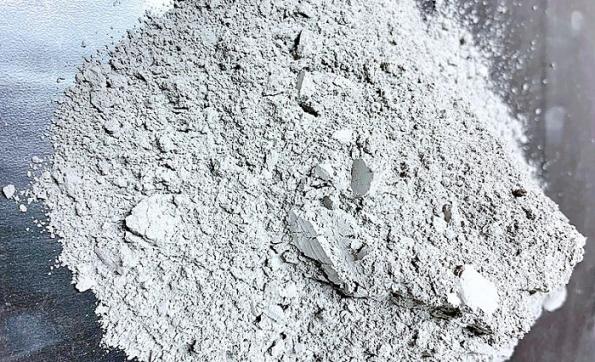Cement manufacturing uses some of the finest-grit bulk materials, which can cause serious bulk flow issues. With the use of both fine or moist materials like bauxite, clay, slag, and limestone, these materials can create issues such as bridging, ratholing, and flooding. When the chutes and hoppers incur material build-up, this can become a dangerous situation for workers.
These issues not only effect efficiency of workflow, but they reduce outputs which cost time and money. Pneumat cement industry solutions offer several unique and proprietary innovations that came from first-hand experience with each of these dangerous situations. But first, let’s define the most common problems during cement work.

Common material flow issues
- Bridging occurs when a self-created arch develops just above the outlet of bulk material in a silo or hopper just before it empties. A bridge forms when wall friction holds up the ends of the arch. The resulting arch supports the weight of the material above it, stopping the flow.
- Ratholing is another common problem. This means the material is emptied only in the middle of the hopper, leaving behind material along the outer walls. When silo walls are not smooth or steep enough, and the materials are not kept moving, the particles will slide on themselves instead. This creates a cake-like build up on the walls, and the product becomes stagnant. A rathole is formed as the stagnant material sticks to the outside walls, and the only movement is then directly above the hopper or silo opening. This creates a “funnel flow” effect. If the stagnant material is left long enough, the product degrades and releases noxious gases.
- Flooding happens when a collapsing rathole produces a high rate of incoming powder, which will include pressurized air and become more fluid. This results in pressurized powder rushing through cracks, poorly fitted valves, and crevices in worn equipment. Flooding can cause a lot of dust and product waste. Once depressurized, the powder clings to the silo and hopper sidewalls, causing further blockages and ratholes.
Solutions for bulk flow issues
Pneumat offers the dual impact BinWhip(R) that can blast through the toughest hung-up materials in bins and silos. Referred to as the “weed eater on steroids,” it is powerful and innovative tool eliminating the need for hazardous confined space entry. Double whipsets rotating in opposite directions stabilize the whip head for maximum power and control.
The BinDrill is a portable drilling rig used in conjunction with the BinWhip to safely create an opening in a bridged bin. The BinDrill functions like a mobile drilling rig that is operated from the top of the vessel. Sections are added as boring is completed for maximum efficiency.
The Cardox CO2 Blaster is a powerful non-detonating gas expansion system that can replace hazardous explosives. The RailSpreader is an automated system for loading rail cars to 100% capacity while eliminating the need for workers to shove materials at heights. And, when rail cars need unloading, the HopperPopper gets the job done with a high-volume blast of compressed air, eliminating unsafe banging, pounding, and poking of materials.
Nothing is more important to a cement business than keeping work flowing smoothly, efficiently, and safely. These tools help the cement plants to run at full capacity, which means more profits added to your bottom line.




